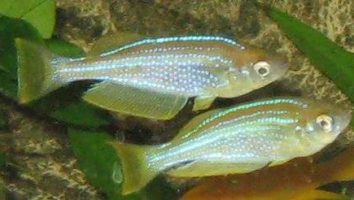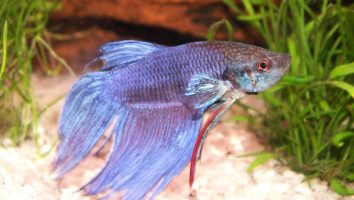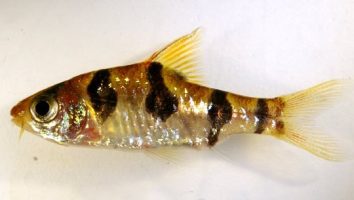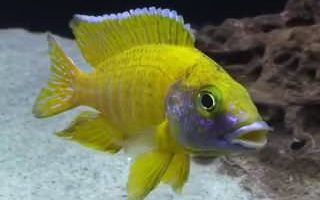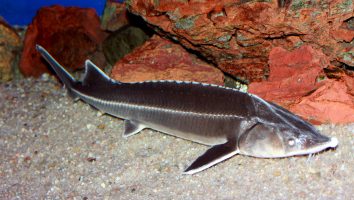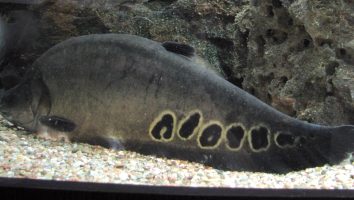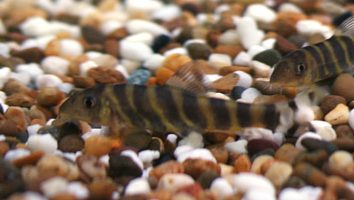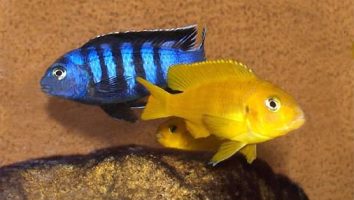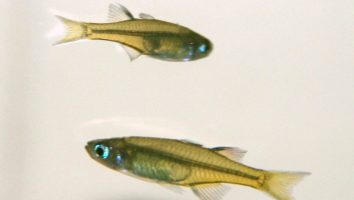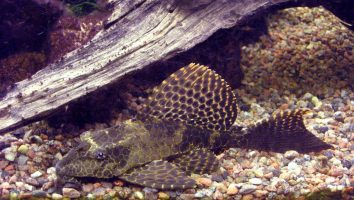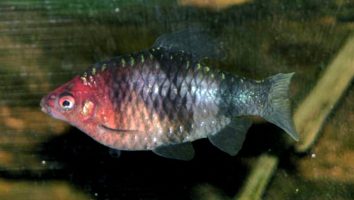Dwarf corydoras are a peaceful and popular freshwater fish that make a great addition to any community tank.
They’re perfect for beginner aquarists too because they’re very easy to care for.
These little fish are also very active and love to swim around in groups. So they’re a lot of fun to watch!
If you’re thinking about getting some dwarf corydoras, this guide will teach you everything you need to know about their care. Tank size, diet, lifespan, and more.
Table of contents
Species overview
The Dwarf Corydoras (Corydoras pumilus) is a species of freshwater fish that’s native to Brazil.
They are found in a wide variety of habitats but prefer slow-moving waters with a lot of vegetation. This could be anything from a river to a swamp.
Dwarf corydoras are peaceful fish that do well in community tanks. They are often found in groups in the wild and this behavior carries over into captivity.
These fish are very popular in the aquarium scene due to their small size and peaceful nature. They are also very easy to care for, making them a great choice for beginner fish keepers.
Appearance

Dwarf corydoras are one of the smaller species of corydoras (hence the name). These little guys only grow to be about 2 inches (5 cm) long at most.
They have a very distinct and easily recognizable color pattern. The bulk of their bodies is a light brown with a few dark brown spots.
The dorsal, caudal, and pectoral fins are dark brown with a bit of a lighter brown coloration on the edges. The anal fin is light brown with a dark brown stripe running down the middle.
The ventral fins are white with a thin black line running down the center. Dwarf corydoras have small eyes that are very close together.
Their mouths are located at the bottom of their faces and have barbels (or whiskers) that help them find food.
Dwarf corydoras have a very distinct body shape that helps them stand out from other fish. They’re very flat from top to bottom and have a rounded belly. Their bodies taper off at the end to form a point.
Lifespan
The lifespan of a dwarf corydoras is typically 5 to 8 years. However, there are reports of these fish living up to 10 years in captivity.
As with most fish, their lifespan will be determined by the quality of care they receive. Things like water quality, diet, and stress levels all play a role in how long a fish will live.
Size
Dwarf corydoras are one of the smaller species of Corydoras available and stay relatively small even when fully grown. The average size of a Dwarf corydoras is between 2 and 2.5 inches.
Tank
Tank Size
Dwarf corydoras are a relatively small species of fish, so they don’t need a lot of space. The recommended minimum tank size for these fish is 10 gallons.
If you’re keeping a school of 5 or more fish, we recommend going up to a 20 gallon tank. As you add more fish to your tank, you’ll need an additional 2 to 4 gallons per fish.
Water Parameters
Dwarf corydoras are a tropical fish that come from the rivers of South America. As such, they prefer warm water with plenty of oxygen.
To recreate this environment in your home aquarium, you’ll need to maintain the following water parameters.
- Water temperature: 72 to 78 degrees Fahrenheit
- pH levels: 6.5 to 7.5
- Water hardness: 2 to 12 dGH
- Alkalinity Levels: 4-8 dKH
What To Put In Their Tank
The first thing you need to do is pick a substrate. These fish like to scavenge around the bottom of the tank for food, so you’ll want something that won’t hurt their delicate barbels.
We recommend a sand substrate for this. Not only is it soft, but it also has a tendency to stay in place better than other substrates (like gravel). This will help cut down on the amount of time you spend cleaning out their tank.
The next thing you need to do is add some plants. These fish love to hide amongst the foliage, so you’ll want to include a few plants in their habitat.
We recommend going with some fast-growing plants like hornwort or water wisteria. These will help provide your fish with some cover and won’t take over the tank.
You can also add some rocks and driftwood to their habitat. These provide some nice hiding spots for your fish and can help break up the line of sight in the tank (which will make your fish feel more secure). Just make sure that the wood is fully submerged!
Common Diseases
Corydoras are a relatively hardy fish, but that doesn’t mean they can’t get sick. The most common disease you’ll see in these fish is Ich.
Ich is a very common freshwater fish disease that is caused by a parasite. The most obvious symptom of this disease is the presence of white spots on the body of your fish.
If left untreated, this disease can be fatal. However, it is relatively easy to treat if you catch it early.
The best way to prevent your corydoras from getting sick is to maintain a clean and stable tank. These fish are very sensitive to changes in water quality, so it’s important to keep a close eye on things.
If you notice anything out of the ordinary, don’t hesitate to consult your vet. The sooner you act, the better the chance is that your fish will make a full recovery.
Behavior & Temperament
The dwarf corydoras is a schooling fish, so it does best when it’s kept with six or more of its own kind. These fish are social creatures that enjoy each other’s company.
Dwarf corydoras are shy fish that tend to stay near the bottom of the tank. They’re not known for being very active, but they will come out to play when it’s feeding time. These fish are scavengers and will eat just about anything they can find.
Dwarf corydoras are peaceful fish that get along with just about everyone. They’re not known for being aggressive, so you don’t have to worry about them causing any problems in your tank.
Tank Mates
In terms of tank mates, the Dwarf corydoras is a fairly peaceful species. They’re not aggressive and can get along with most other fish.
The main thing you need to worry about is compatibility in terms of water conditions and temperament.
These fish come from slow-moving waters in South America. As a result, they do best in tanks with similar conditions.
The good news is that there are plenty of other species from the same region. This means that finding tank mates for your Dwarf corydoras should be a breeze.
Some compatible species include:
- Neon Tetras
- Cardinal Tetras
- Guppies
- Platies
- Mollies
- Endler’s Livebearers
- Swordtails
- Zebra Danios
Breeding
Dwarf corydoras are one of the easier species of Corydoras to breed. They don’t require a lot of special care or attention. However, there are still a few things you need to do to ensure success.
The first step is to set up a breeding tank. It should hold at least 10 gallons of water. The water should be soft and slightly acidic. You can achieve this by using reverse osmosis or distilled water.
Then, add some live plants and a fine gravel substrate. The plants will provide hiding places for the fry and the substrate will help to keep the water clean.
Next, add a group of Corydoras. You should have at least four, but more is better. They should be a mix of males and females. You can tell them apart by looking at their fins. Males have longer fins, while females have shorter fins.
Once the tank is set up, the fish will do the rest. They will spawn in the morning and the female will lay her eggs on the plants. The male will then fertilize them.
After about five days, the eggs will hatch. The fry will feed on microscopic organisms in the water. You can supplement their diet with baby brine shrimp.
As they grow, you can gradually start to feed them larger foods. When they reach 1 inch in length, they can be moved to a regular tank.
Conclusion
The Dwarf Corydoras is one of our all-time favorite freshwater fish. They’re small, but they have a big personality.
They’re also very easy to care for, which makes them a great option for beginner fishkeepers.
If you’re looking for a fun and rewarding fishkeeping experience, we highly recommend giving the Dwarf Corydoras a try!

